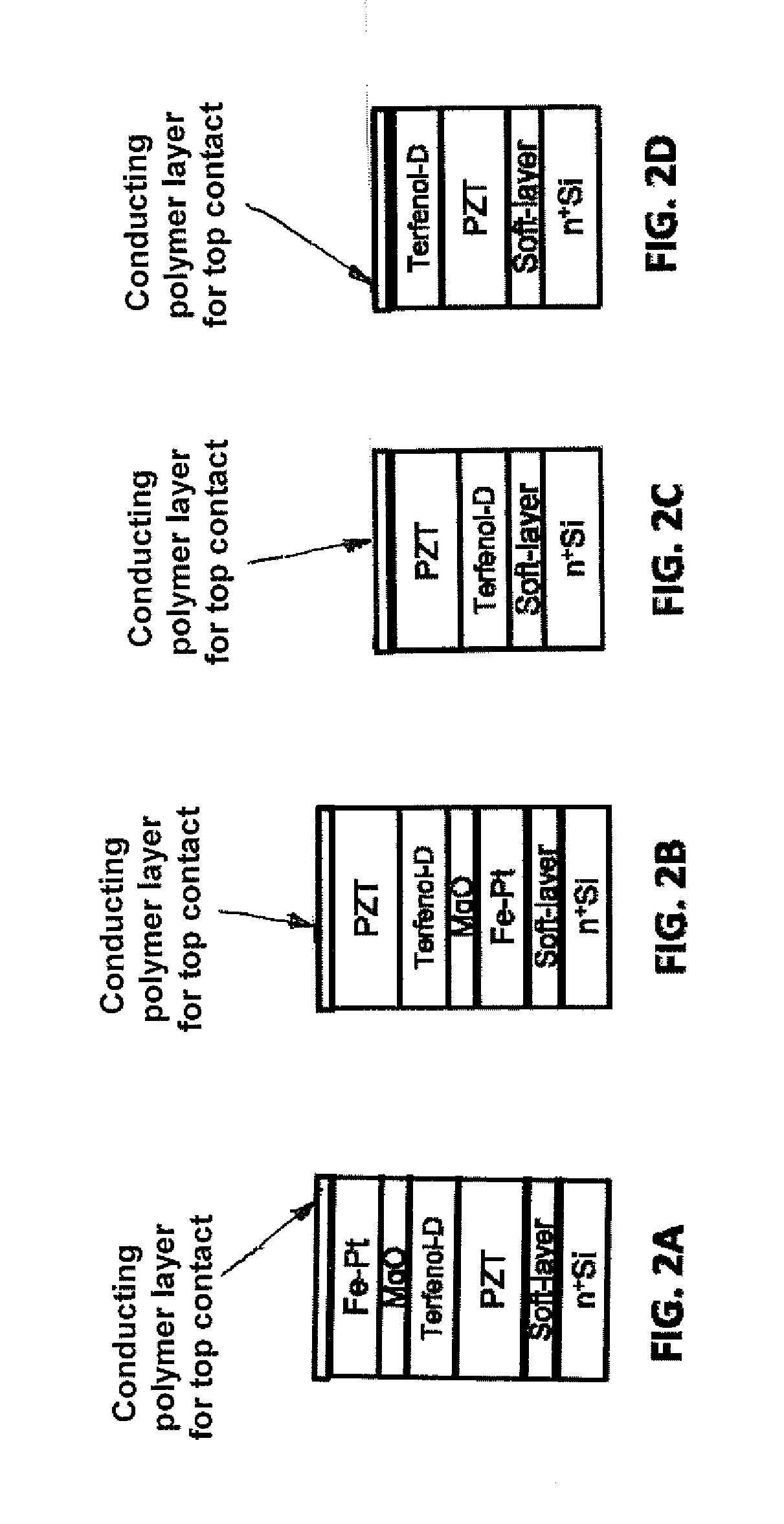Planar Multiferroic/Magnetostrictive Nanostructures as Memory Elements, Two-Stage Logic Gates and Four-State Logic Elements for Information Processing
a multi-ferroic/magnetostrictive nanostructure and information processing technology, applied in semiconductor devices, digital storage, instruments, etc., can solve the problems of excessive energy (or heat) dissipation in the device, continued downscaling of digital electronic devices, and high energy consumption of current memory and logic circuits, so as to achieve energy efficiency and energy always a premium
- Summary
- Abstract
- Description
- Claims
- Application Information
AI Technical Summary
Benefits of technology
Problems solved by technology
Method used
Image
Examples
Embodiment Construction
[0027]A multiferroic structure consists of a piezoelectric layer (e.g., PZT) and a magnetostrictive layer (e.g., Nickel or Terfenol-D) as shown in FIG. 1. If the lateral dimensions are on the order of 100 nm and the magnetostrictive layer's thickness is approximately 10 nm, then the latter behaves like a single-domain nanomagnet. The elliptical shape of this single domain nanomagnet ensures that its magnetization can have only two stable orientations when no stress is applied on it: along the major axis of the ellipse, i.e., the +y and −y axis. These two magnetization states encode “0” and “1” states when the magnet is used to store binary bits. When an electric voltage is applied across the piezoelectric layer, it deforms and the resulting stress / strain is transferred to the magnetostrictive layer on top. The stress anisotropy in the magnetostrictive layer then causes its magnetization to rotate. For materials with positive magnetostriction (e.g., Terfenol-D), tensile stress favors...
PUM
 Login to View More
Login to View More Abstract
Description
Claims
Application Information
 Login to View More
Login to View More - R&D
- Intellectual Property
- Life Sciences
- Materials
- Tech Scout
- Unparalleled Data Quality
- Higher Quality Content
- 60% Fewer Hallucinations
Browse by: Latest US Patents, China's latest patents, Technical Efficacy Thesaurus, Application Domain, Technology Topic, Popular Technical Reports.
© 2025 PatSnap. All rights reserved.Legal|Privacy policy|Modern Slavery Act Transparency Statement|Sitemap|About US| Contact US: help@patsnap.com



